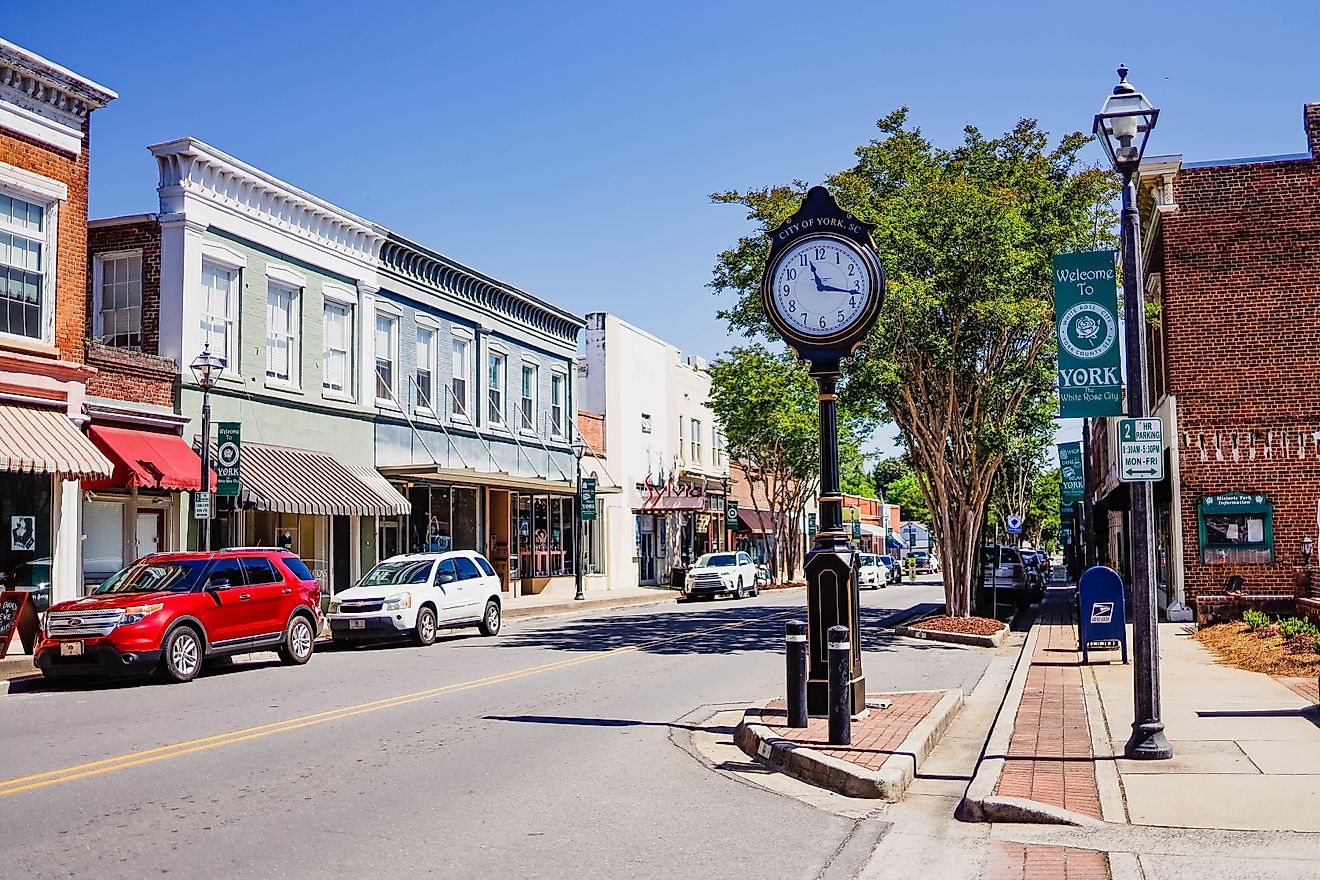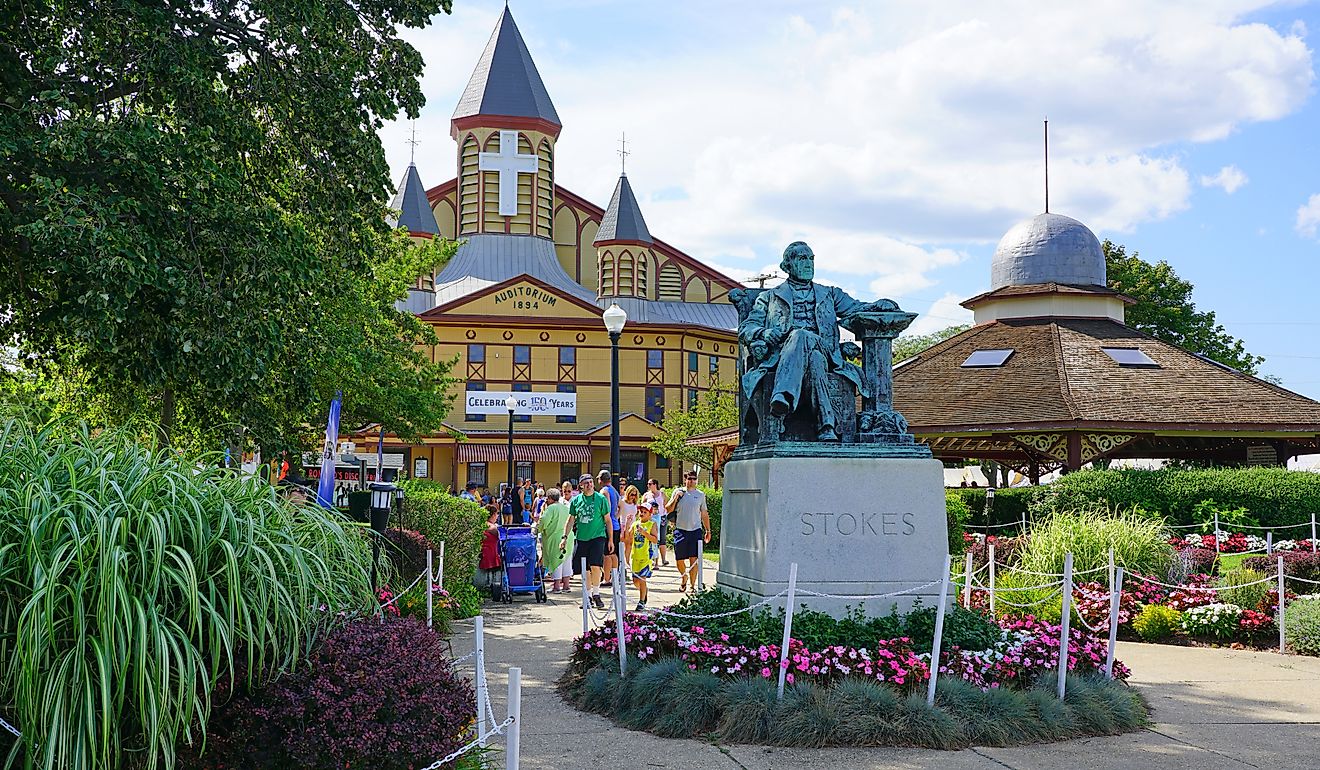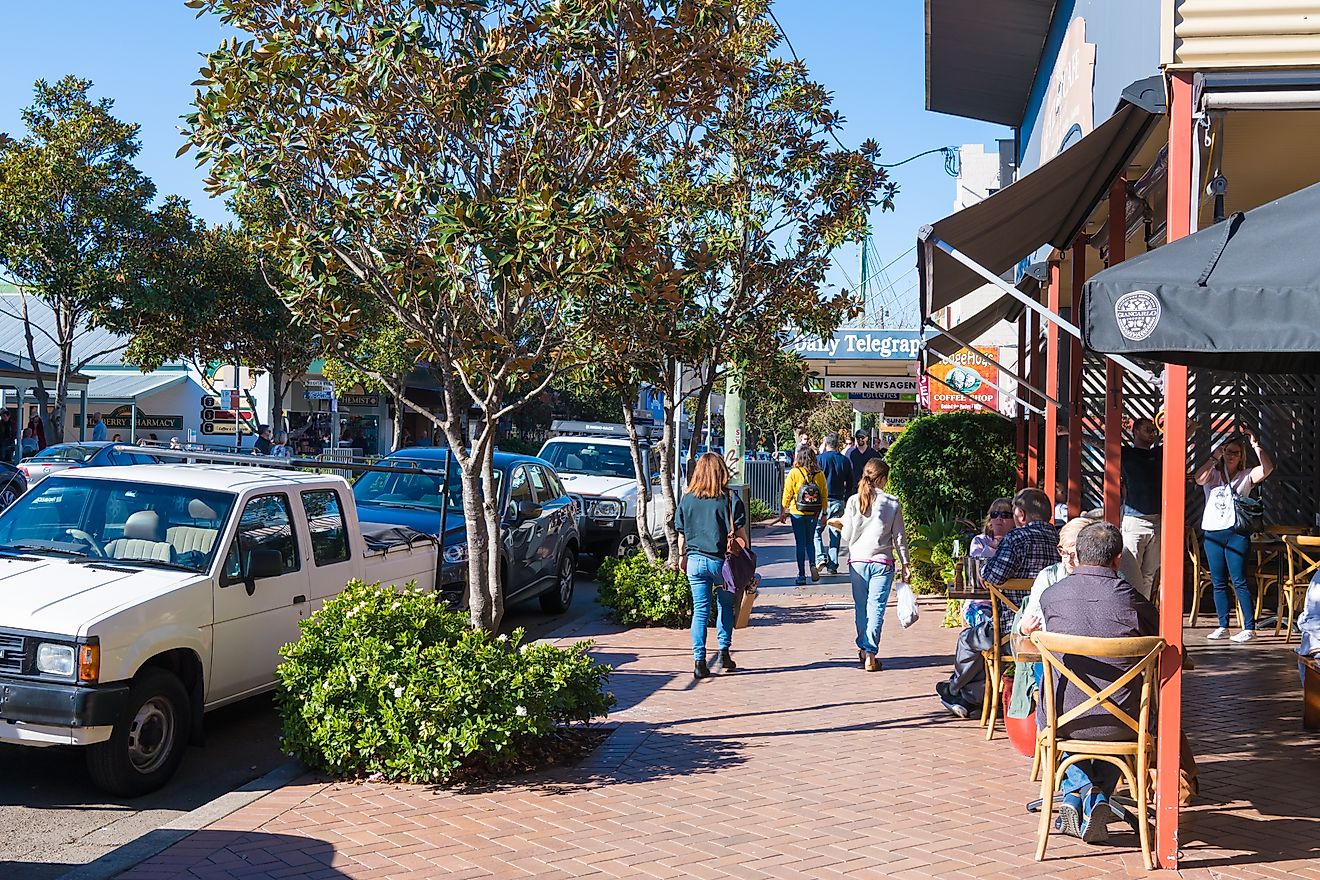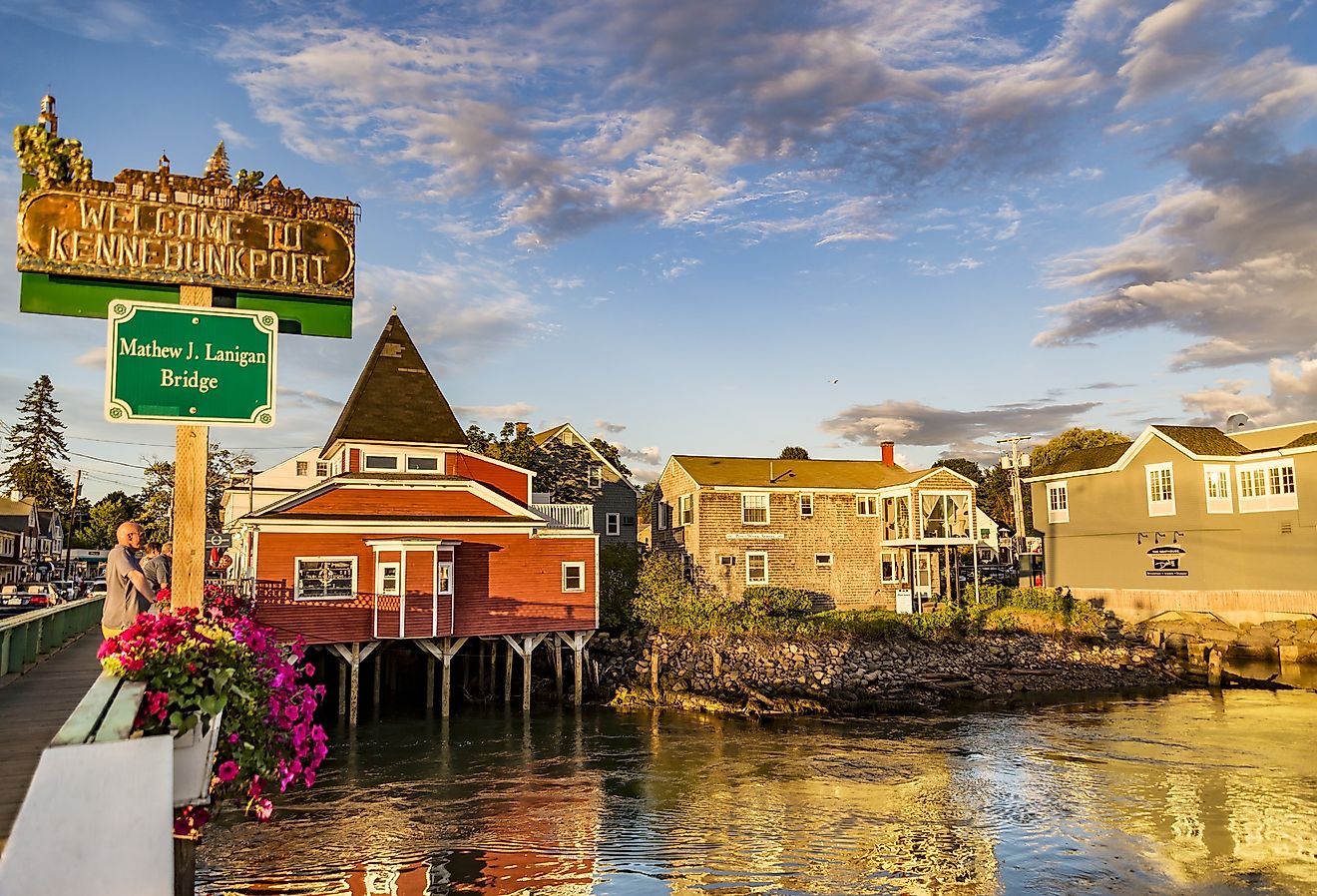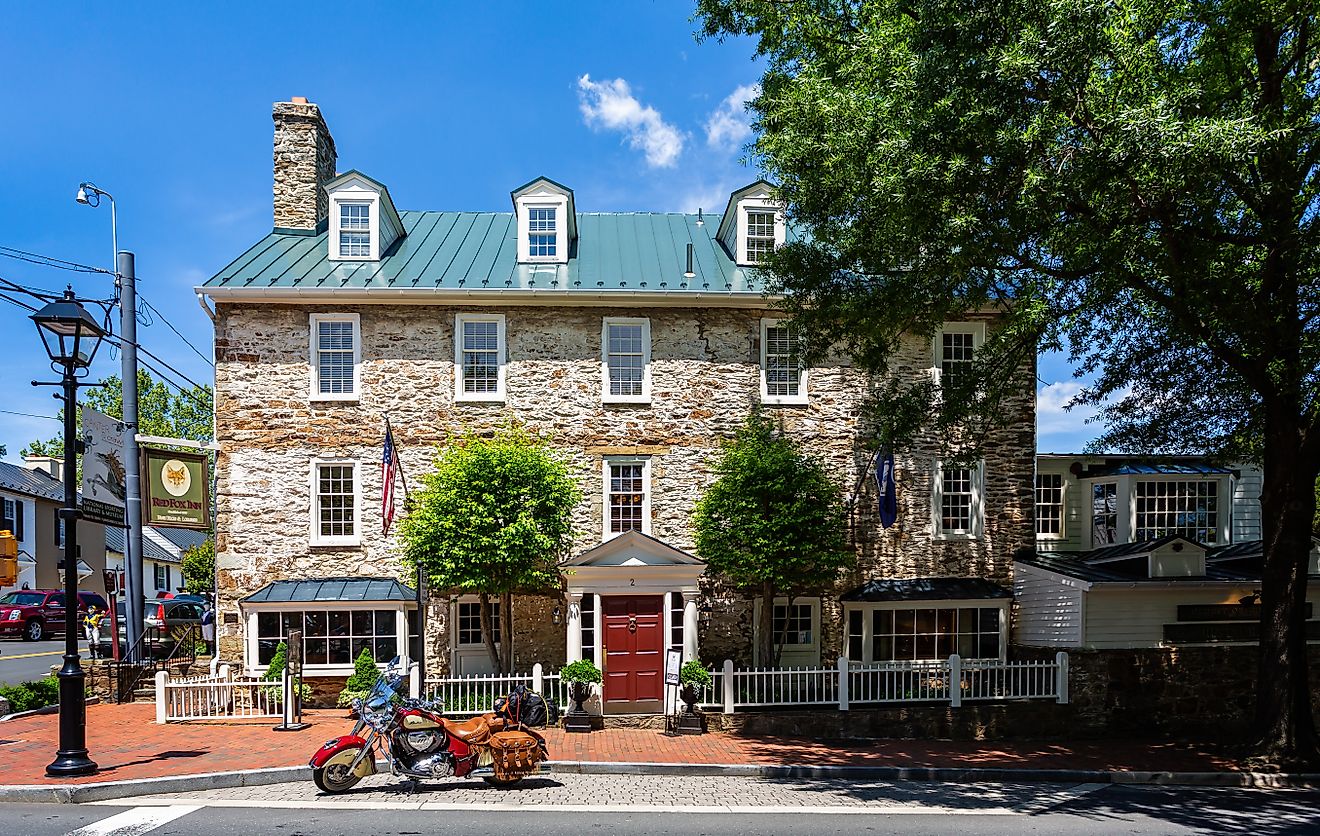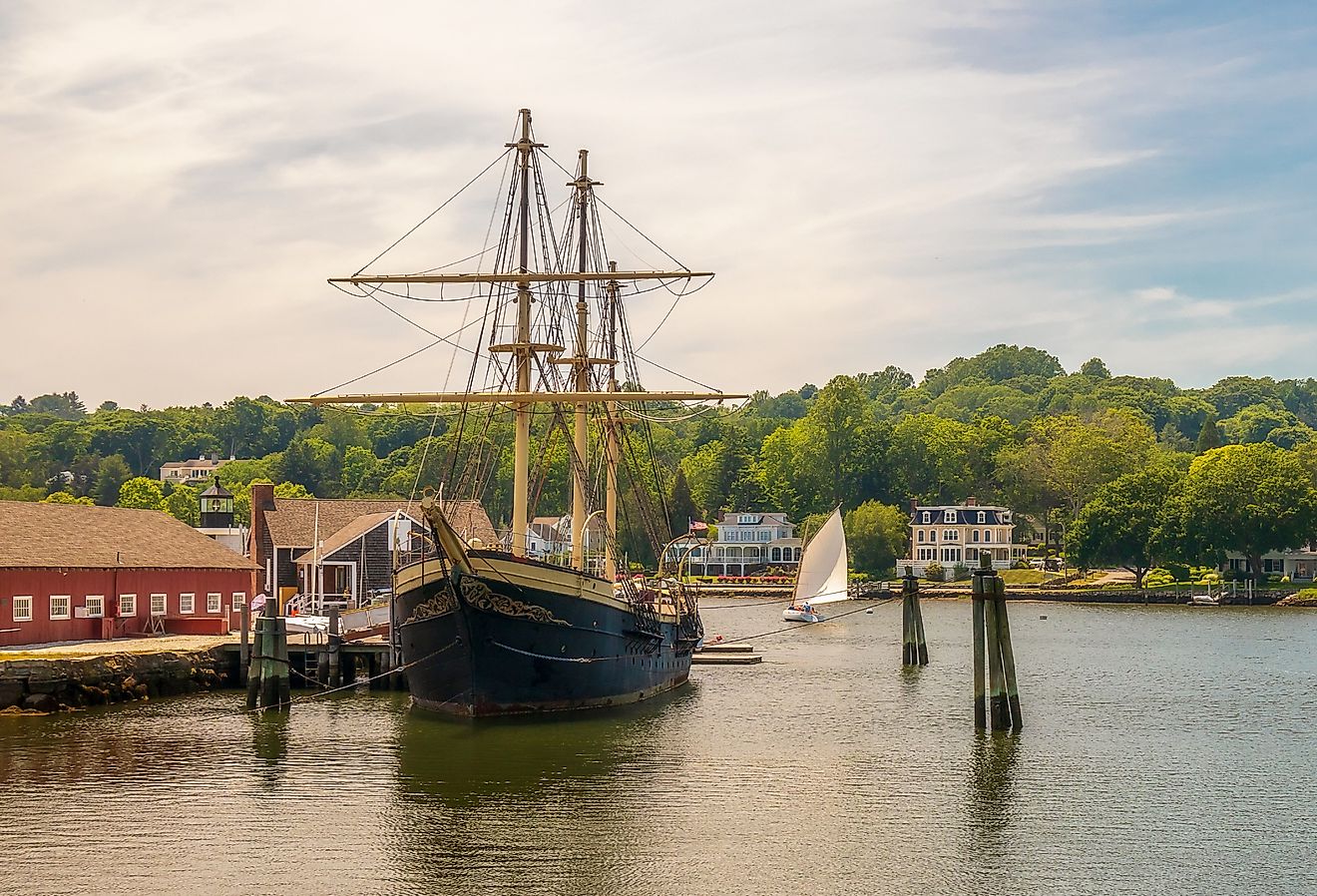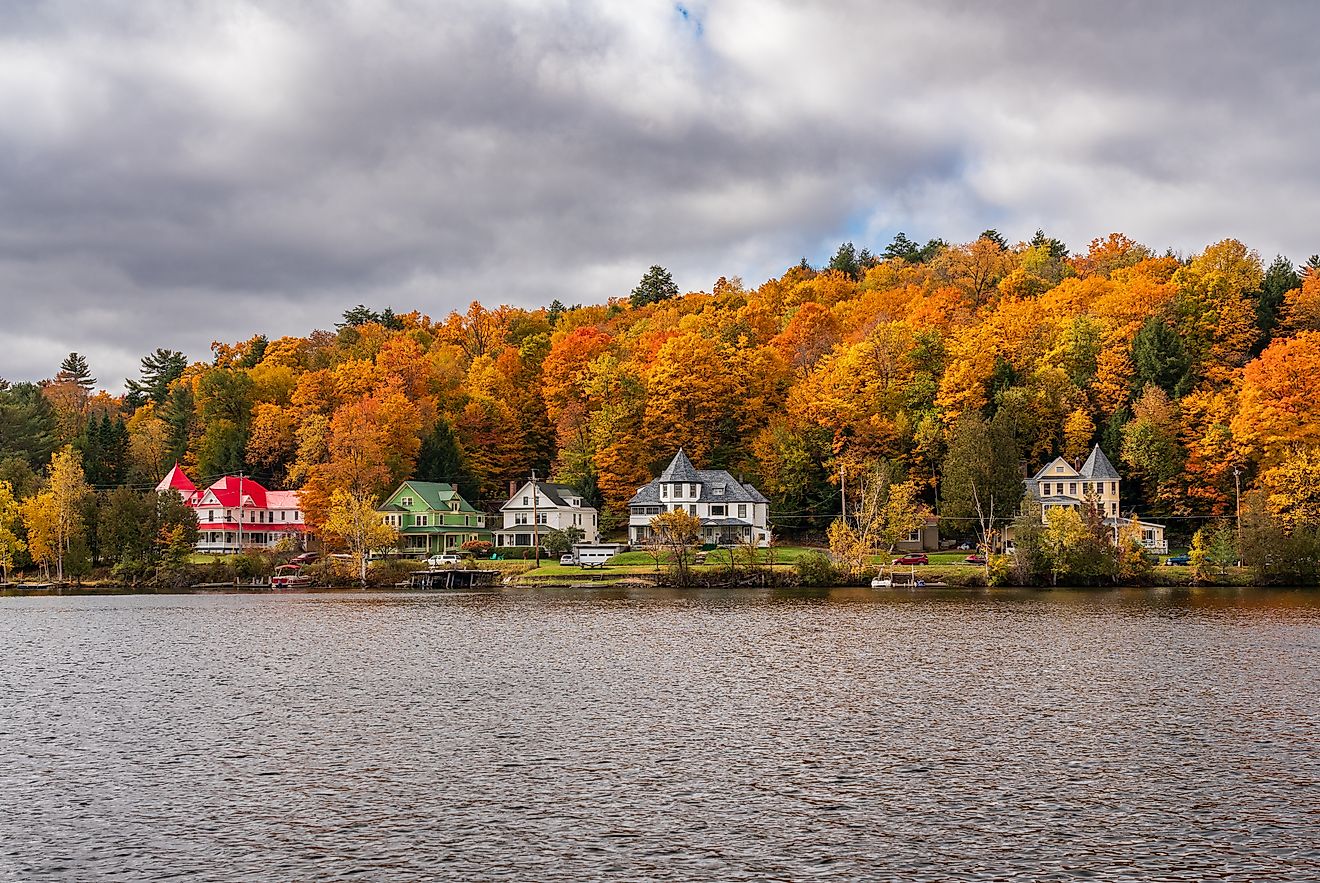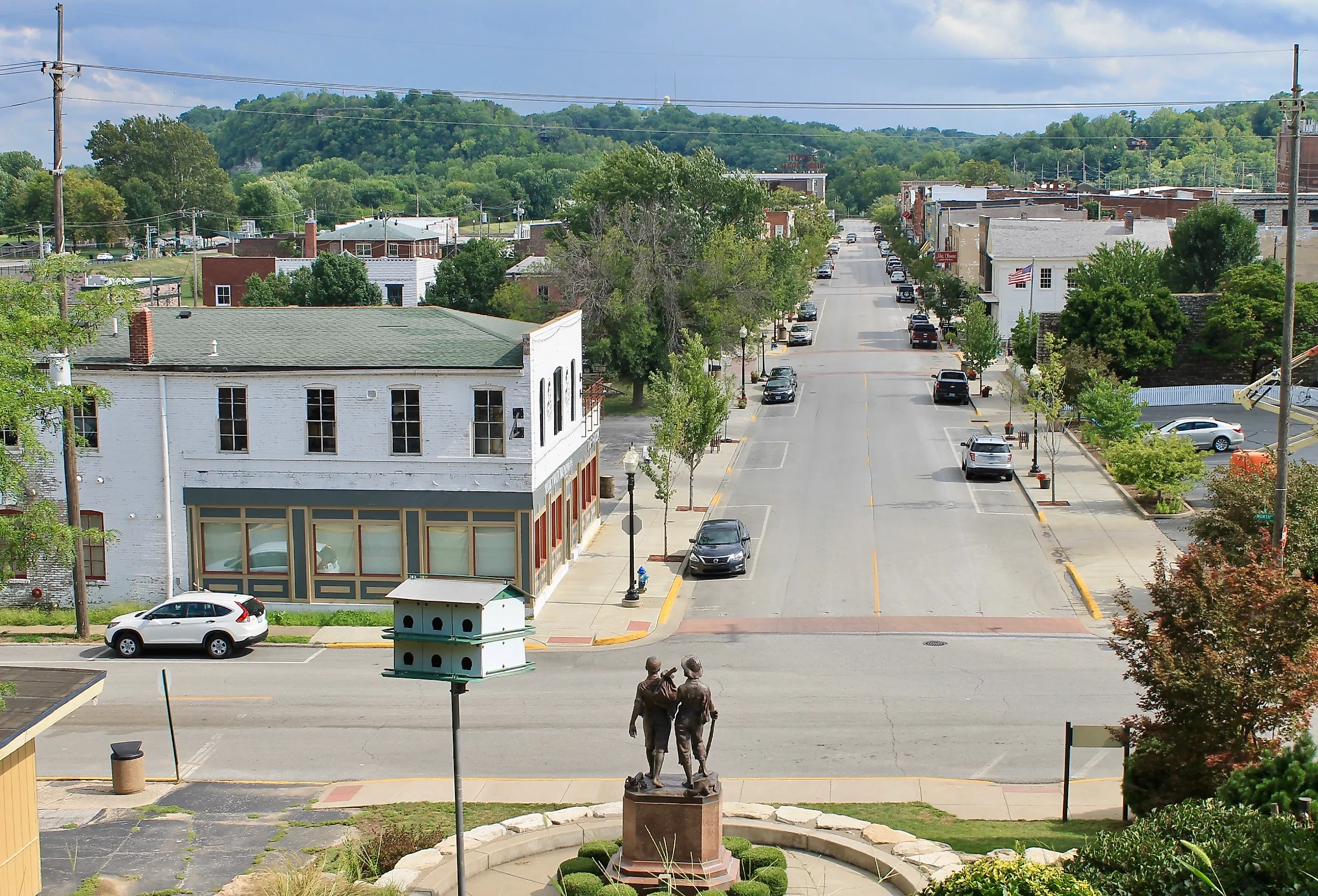
11 Cutest Small Towns In Missouri
Missouri’s central location made it a natural crossroads for cultures and travelers moving west. Bordered by eight states and shaped by both the Mississippi and Missouri Rivers, it became a place where French, German, and early American influences fused into communities, each with its own story and traditions.
These influences continue to shape Missouri’s most picturesque destinations, inspiring suburbs that feel authentic rather than preserved. You can sip wine surrounded by vine-covered hills in Hermann, walk through Ste. Genevieve’s centuries-old French homes, or explore Hannibal’s storybook riverfront, are forever tied to Mark Twain’s childhood adventures. Each stop reveals a different side of the state and why they are called the cutest small towns.
Hermann
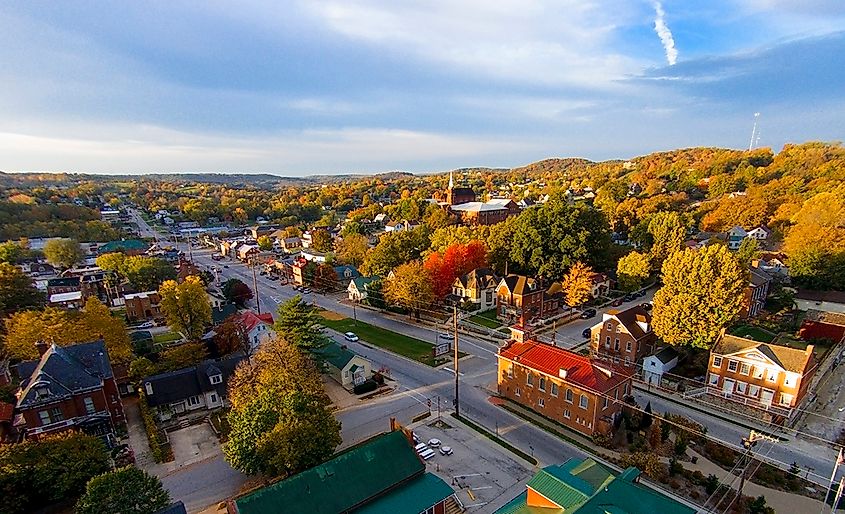
Founded in the 1830s by German immigrants who wanted to protect their culture, Hermann still reflects the Old World charm they brought to the Missouri River valley. The settlers discovered that grapes thrived in the rocky soil, giving rise to a winemaking tradition that defines the community today. You can tour the Deutschheim State Historic Site, where homes and artifacts reveal what life was like for 19th-century German families, or stop by Stone Hill Winery, established in 1847 and once one of the largest wine producers in the nation.
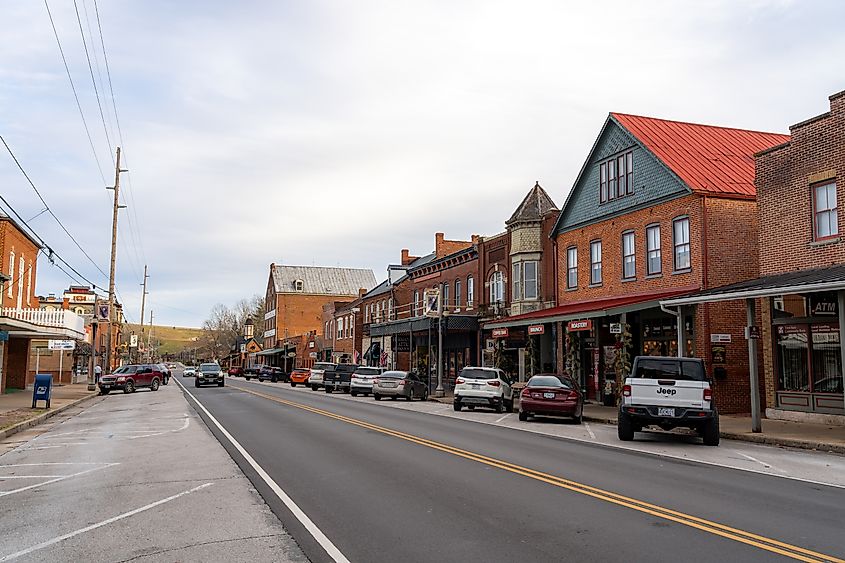
Hermann’s appeal also lies in its sense of continuity. The Octagonal Rotunda Building, built in 1864, still hosts events and fairs, while the Christopher S. Bond Bridge connects the area to the scenic Katy Trail, offering cyclists and walkers views of the river and nearby bluffs.
Weston
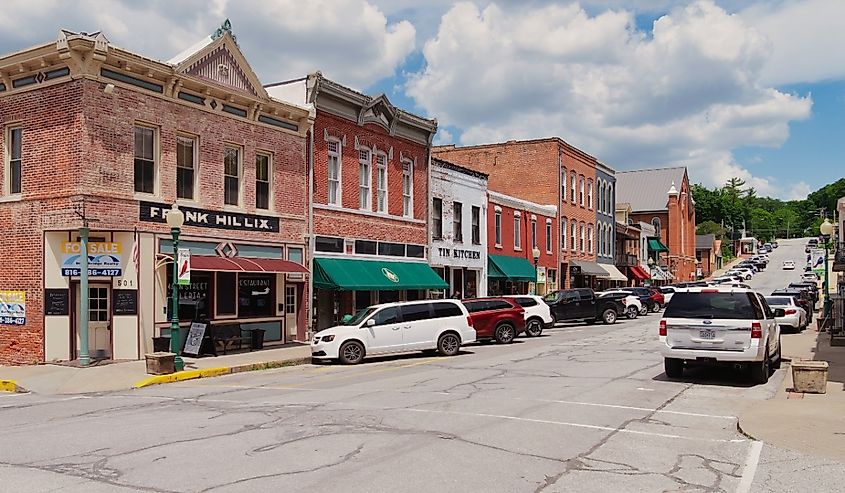
Weston began in the early 1800s as a busy river port and trading hub long before Kansas City grew around it. The change in the river’s course slowed its expansion, but it left behind a community rich in architecture and local pride. At the Weston Bend State Park Overlook, visitors can take in sweeping views of the river valley, while the Weston Historical Museum showcases artifacts from the steamboat era and early frontier life.
Today, Weston thrives as a favorite getaway filled with independent shops and locally made goods. The Holladay Distillery, dating back to 1856, offers bourbon tours on its original grounds, and the revived Weston Brewing Company serves craft ales in limestone cellars from the 1840s.
Arrow Rock

Arrow Rock sits along the Missouri River and has roots reaching back to the early 1800s when it served as a key stop on the Santa Fe Trail. Its name comes from a flint-bearing cliff once used by Native Americans to craft arrowheads. Today, its entire area is recognized as a National Historic Landmark, known for its well-preserved streets and 19th-century buildings that give visitors a real sense of early Missouri life. At the Arrow Rock State Historic Site, you can explore museums, walking trails, and exhibits that tell the story of how this riverside settlement helped shape trade and travel across the Midwest.
A highlight for many is the Lyceum Theatre, one of Missouri’s oldest professional theaters, which has been entertaining audiences since the 1960s in a restored church building. The J. Huston Tavern, dating to 1834, is considered the oldest continuously operating restaurant in the state and serves traditional Missouri fare in a setting that has not lost its frontier feel. You can also browse the Arrow Rock Antiques, where local artisans display handmade works.
Ste. Genevieve

As Missouri’s oldest European settlement, Ste. Genevieve traces its story back to the mid-1700s when French settlers built homes using the rare poteaux-en-terre method, setting wooden posts directly into the ground. That heritage still stands today at the Ste. Genevieve National Historical Park, where buildings and guided tours reveal daily life from centuries ago. The nearby Centre for French Colonial Life deepens the experience with exhibits about frontier trade. Outside its historic core, Ste. Genevieve has a contemporary side filled with art galleries, cafés, and family-run wineries like Brix Urban Winery & Market and Silver Sycamore art gallery.
Rocheport
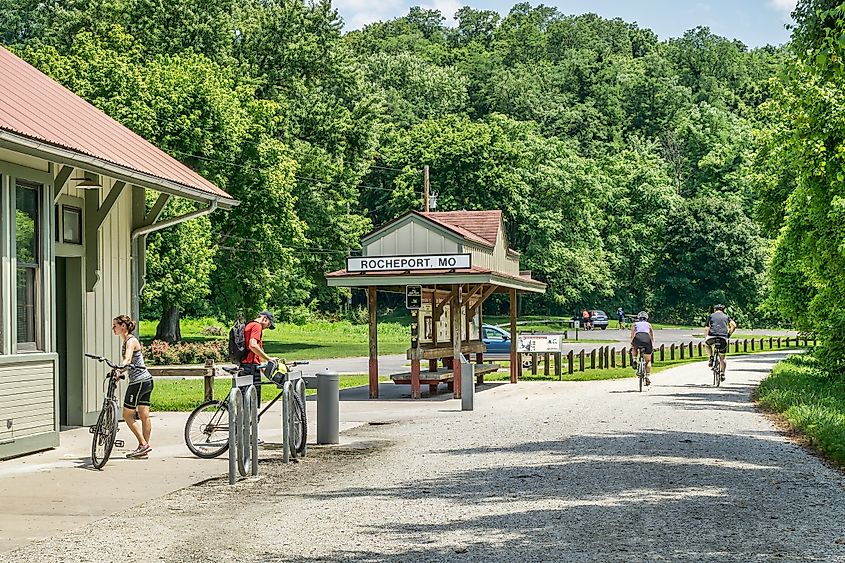
Rocheport is a small riverside area that became an important stop for travelers heading west. The area’s limestone bluffs and scenic trails make it one of the most photographed spots on the Katy Trail State Park, which runs directly through town. Cyclists and hikers often pause at Les Bourgeois Vineyards, where a cliffside bistro overlooks the river and offers local wine tastings with one of the best sunset views in the state.
Its district is filled with restored brick storefronts that now house antique shops and bed-and-breakfasts. The Rocheport General Store, which has operated for over a century, remains a favorite for live music and hearty meals. Just a short walk away, visitors can tour the Rocheport Museum to learn about the Lewis and Clark Expedition, which passed through Rocheport in 1804.
Kimmswick
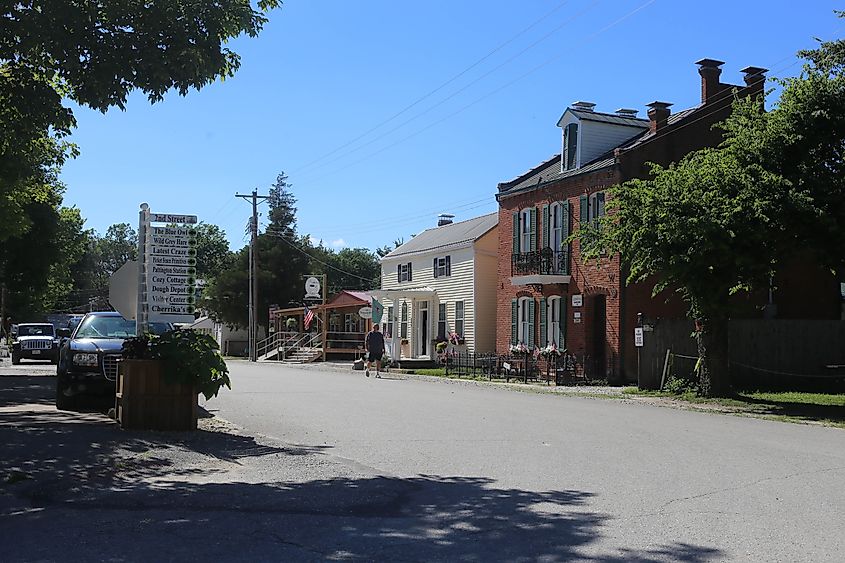
Kimmswick has grown since the 1850s into one of Missouri’s most beloved day-trip destinations. Founded by German merchant Theodore Kimm, it prospered thanks to steamboat and rail traffic that passed along the Mississippi River. Many of its remaining old buildings have now been converted into cozy shops, tea rooms, and bakeries. One of the best stops is the Blue Owl Restaurant & Bakery, famous for its towering Levee High Apple Pie and warm, family-run atmosphere.
Tour the Anheuser Estate and Museum, the former home of Frederick Anheuser, which overlooks the river and displays personal items from the brewing family. Each year on the last full weekend of October, the Strawberry and Apple Butter Festivals fill Kimmswick’s walkable center with food vendors, handmade crafts, and live music. Just a short drive away, the Mastodon State Historic Site showcases discovered Ice Age fossils, offering an unexpected connection between prehistoric Missouri and the present.
Boonville

Boonville’s connection to pioneer history runs deep; the Boone family operated salt works here, and the city’s name honors their legacy. The area also played a pivotal role during the Civil War, with the Battle of Boonville in 1861 helping secure Union control of central Missouri.

Beyond the war stories, Boonville also has exciting places travelers can explore, like the Rivers, Rails & Trails Museum, which brings together exhibits on steamboat trade and frontier travel, while Thespian Hall, built from 1855 to 1857, continues to host performances in one of the oldest operating theaters west of the Mississippi. Just outside Boonville, Warm Springs Ranch welcomes visitors to meet the world-famous Budweiser Clydesdales, large, gentle horses usually featured in Super Bowl ads.
Hannibal

Hannibal is best known as the boyhood home of author Mark Twain. The town inspired many of his most famous works, including The Adventures of Tom Sawyer and Adventures of Huckleberry Finn. You can step into that literary world at the Mark Twain Boyhood Home and Museum, which features restored buildings, manuscripts, and exhibits about the author’s early life. Just a short walk away, the Mark Twain Cave Complex offers guided tours through the cavern Twain immortalized in his novels, making it one of Missouri’s most recognizable literary landmarks.
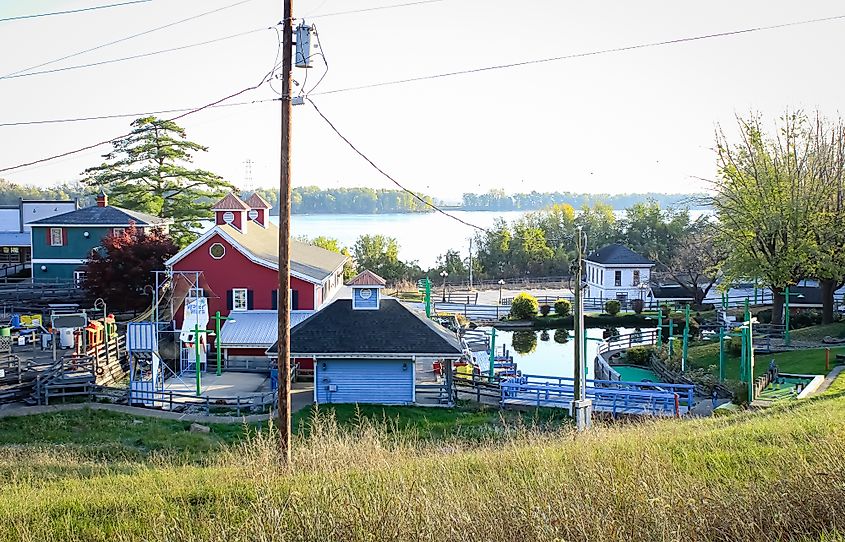
Hannibal also celebrates its river heritage. The Hannibal Riverfront hosts sightseeing cruises on the Mark Twain Riverboat, giving tourists a chance to experience the same waterway. For panoramic views of the Mississippi, hike to Lover’s Leap or ride the Mark Twain Memorial Lighthouse trail, both offering sweeping scenes that show why Hannibal has been inspiring tourists and writers for generations.
Lexington
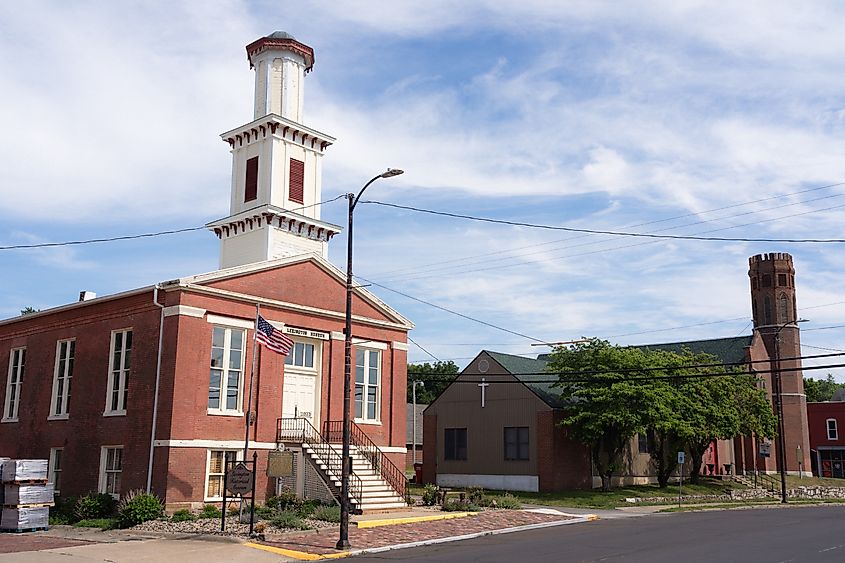
Lexington tells a story of survival and reinvention. In the 1820s, it thrived as a booming trade center, its docks crowded with steamboats carrying goods and fortune seekers heading west. Decades later, it became a key site in the Civil War, where Union and Confederate forces clashed during the Battle of Lexington in 1861. The Anderson House, found within the Battle of Lexington State Historic Site, still bears cannonball scars on its brick walls.
In the present day, Lexington has become a place that values craft and community. Nearby, the Lafayette County Courthouse, built in 1847, remains one of Missouri’s oldest working courthouses. Wine lovers can stop by Stonehaus Farms Winery to enjoy regional blends and panoramic views, while the Lexington Self-Guided Walking Tour connects visitors to more than thirty heritage sites across the city.
Excelsior Springs

Excelsior Springs made its name during the late 19th century after mineral springs were discovered, and people began arriving to “take the waters” for health and recovery purposes. The Hall of Waters Visitor Center, opened in 1937, was once the hub for mineral-water bottling and spa treatments. Today, it serves as a visitor center and museum, and its Art Deco design still draws attention.
Beyond its spring legacy, you will also find places like the Excelsior Springs Museum & Archives, which preserves local artifacts and stories, giving a deeper look into how the town grew. Wine lovers can take a trolley tour to Shamrock Hills Vineyard & Winery around the region for tastings and rural scenery. For nature and relaxation, Tryst Falls Park offers trails, waterfalls, and picnic spots inside the city’s green spaces.
Poplar Bluff
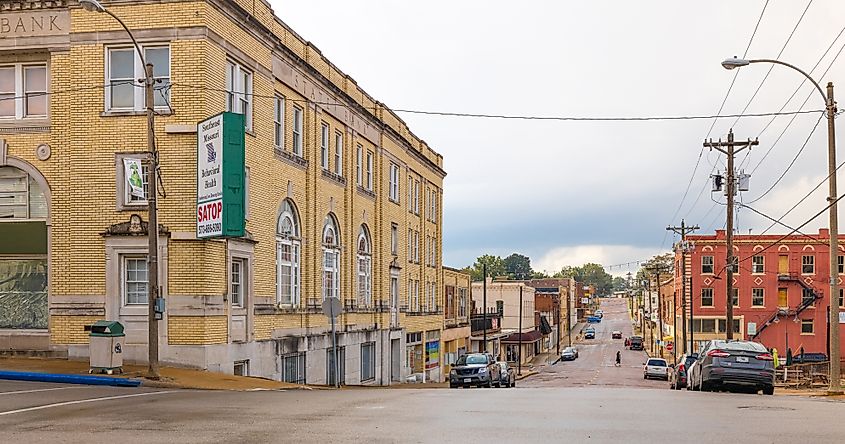
Poplar Bluff rests along the edge of the Ozark Foothills and is known as the “Gateway to the Ozarks.” Its location makes it a natural base for outdoor activities, from canoeing on the Black River to hiking the Mark Twain National Forest, which surrounds much of the region. The Poplar Bluff Ranger District manages several acres for camping and scenic drives, making it one of southern Missouri’s best spots for year-round nature access. In town, the Mo-Ark Regional Railroad Museum celebrates the area’s early rail heritage with restored trains and memorabilia from the 1920s.
In Downtown Poplar Bluff, you will find a beautiful town that has not lost its heritage and mid-century flair. The Rodgers Theatre, an Art Deco landmark from 1949, continues to host concerts and community events, while nearby cafés and antique shops fill the historic Main Street. Visitors can stay at the Drury Inn & Suites Poplar Bluff, which offers modern comfort just minutes from the riverfront.
Missouri’s smaller destinations may not make the loudest headlines, but they consistently deliver the kind of experiences travelers return for. Each place offers a different reason to visit, from local food and wineries to historic districts that still feel alive with purpose. What connects them is a shared pride in place and a rhythm of life that makes slowing down easy. For anyone planning a weekend away, these towns show how much variety fits within one state.
